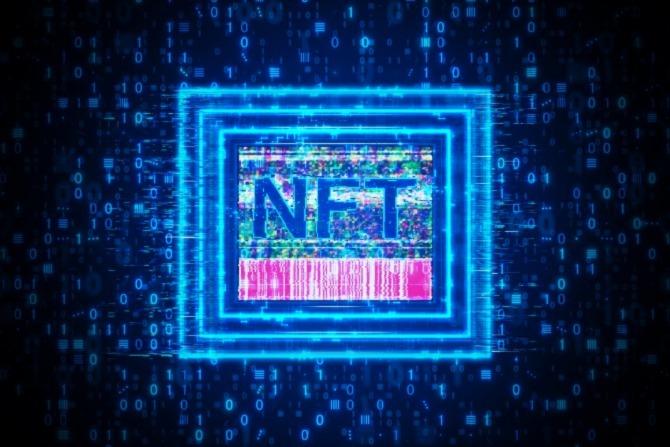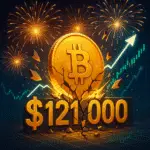Non-Fungible Tokens (NFTs) have taken the digital world by storm, but what exactly are they, and why do they matter? Whether you’ve seen headlines about million-dollar digital art sales, heard about blockchain-powered collectibles, or wondered if NFTs are just another passing trend, you’re not alone. These unique digital assets are transforming industries, from art and gaming to finance and identity security, creating new opportunities—and challenges—for creators, investors, and businesses alike.
At their core, NFTs are built on blockchain technology, providing a way to establish verifiable ownership of digital content. Unlike cryptocurrencies such as Bitcoin or Ethereum, which are Fungible and interchangeable, NFTs are one-of-a-kind, offering scarcity, exclusivity, and proof of authenticity. This has led to a surge in interest from investors looking to diversify beyond stocks, ETFs, and traditional assets into the world of crypto and digital collectibles**.
But are NFTs a smart investment, or are they just speculative hype? How do they fit into the larger conversation about market value, liquidity, and ownership in the digital economy? In this guide, we’ll break down everything you need to know about NFTs—how they work, their real-world applications, and the risks and rewards of getting involved. Whether you’re a curious beginner, a digital creator, or an investor exploring new frontiers, this deep dive will help you navigate the evolving NFT landscape with confidence.
Understanding NFTs
Non-Fungible Tokens (NFTs) have been making waves in the digital world, but what sets them apart from other assets like cryptocurrency, stocks, and commodities? If you’ve ever bought a digital song, collected rare trading cards, or invested in artwork, you already understand the value of owning something unique. NFTs take this concept a step further, using blockchain technology to create verifiable digital ownership of items that can’t be replicated.
What Makes NFTs Different?
Unlike traditional cryptocurrencies such as Bitcoin or Ethereum, which are fungible (meaning each unit is identical and interchangeable), NFTs are one-of-a-kind. Here’s why that matters:
- Unique Identification – Each NFT has a distinct digital signature stored on a blockchain, proving its authenticity.
- Scarcity & Value – Because NFTs are limited in supply, their market value can rise based on demand.
- Ownership & Control – When you buy an NFT, you own a verified piece of digital content, whether it’s art, music, virtual real estate, or even an in-game item.
This uniqueness makes NFTs attractive to investors and collectors, especially those looking to diversify beyond stocks, ETFs, or traditional markets into emerging digital assets.
How Do NFTs Work?
NFTs are created (or “minted”) using blockchain protocols like Ethereum’s ERC-721 and ERC-1155 standards, ensuring secure and transparent ownership records. Here’s a simple breakdown of the process:
- Minting – An NFT is created and stored on a blockchain.
- Buying & Selling – It can be traded on NFT marketplaces like OpenSea using crypto wallets.
- Smart Contracts – These govern transactions, ensuring authenticity, royalties for creators, and automated execution of terms.
Because of smart contracts, NFT creators can earn royalties every time their digital assets are resold—a game-changer in industries like digital art, music, and gaming.
Why Are NFTs Gaining Popularity?
NFTs aren’t just a trend; they represent a shift in market efficiency and digital ownership. As businesses and artists explore ways to tokenize assets, the potential applications continue to grow. Some of the biggest factors fueling NFT adoption include:
- The Rise of Digital Collectibles – From NBA Top Shot to CryptoPunks, NFT collectibles have turned into valuable assets.
- Integration with Virtual Worlds – NFTs are shaping metaverse economies, allowing users to own land, items, and identities in virtual spaces.
- New Investing Strategies – As more investors look beyond traditional markets, NFTs provide an alternative asset class with high-growth potential.
NFTs are revolutionizing the way we think about ownership, liquidity, and the digital economy. But with great opportunity comes risk—understanding how to navigate this space is crucial before diving in.
In the next section, we’ll explore the different types of NFTs and their real-world applications—because NFTs are far more than just pixelated art.
Final Thoughts: Are NFTs the Future of Digital Ownership?
NFTs have undoubtedly reshaped the way we perceive ownership, value, and digital assets. Whether you’re an investor exploring new opportunities, a creator looking to monetize your work, or simply a curious observer, understanding how NFTs work is essential in today’s evolving digital economy.
But as with any emerging market, the NFT space comes with both potential and pitfalls. While some see NFTs as a legitimate investment strategy, others warn of market volatility, speculation, and security risks. Just like investing in stocks, cryptocurrency, or commodities, it’s crucial to do your research, understand the market value, and assess risks before diving in.
So, where do we go from here?
- Will NFTs continue to revolutionize digital art, gaming, and finance?
- How will blockchain technology evolve to address concerns like liquidity and identity security?
- Can NFTs become a stable asset class, or are they just another speculative trend?
As governments and businesses navigate policy and regulation, the NFT landscape will likely shift, creating new opportunities for innovation. Whether it’s through tokenization, fractional ownership, or integration with the metaverse, NFTs are pushing the boundaries of what’s possible in the digital world.
At the end of the day, the key to success in any market—whether it’s crypto, ETFs, or personal finance—is staying informed. If you’re considering buying, selling, or investing in NFTs, make sure to follow market trends, evaluate risks, and, most importantly, invest wisely.
The world of NFTs is just beginning. Are you ready to be part of it?





